《英汉翻译手册》
| 作者 | 钟述孔著 编者 |
|---|---|
| 出版 | 北京:世界知识出版社 |
| 参考页数 | 720 |
| 出版时间 | 1997(求助前请核对) 目录预览 |
| ISBN号 | 7501208158 — 求助条款 |
| PDF编号 | 88389018(仅供预览,未存储实际文件) |
| 求助格式 | 扫描PDF(若分多册发行,每次仅能受理1册) |
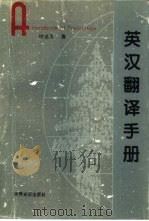
Chapter Ⅰ. Prerequisites for Translation1
Section Ⅰ. Importance of Translation1
Section Ⅱ. Striving to beBoth Red Expert4
Be Dedicated to Work Good at Learning4
Language Proficiency: A Prerequisite4
Exposure to a Variety of Linguistic Experiences5
Vital Importance of General Knowledge6
Basic Training in 3 Essential Aspects9
On Daching Oil-Workers Experience11
Section Ⅰ. The Correct Approach to Translation11
Chapter Ⅱ. Dialectical-Materialism in Translation11
On Yen Fu s3-Character Guide12
Errors Resulting from a Liberal or a Mechanical Approach16
Section Ⅱ. Unity of Content Form18
Translation: A Very Complex Process18
Accurate Comprehension: Foremost Concern; Adequate Representation: Crucial, Too19
Views of Western Experts21
Our Point of View21
Chapter Ⅲ. Set Our Mind to the Task23
The Gap can be Closed23
A Chinese Word Can Be Used in Many Different Senses24
Section Ⅰ. Analysis Handling of Some Familiar Words24
An English Word Can Be Used in Many Different Senses28
Unity of Accurate Comprehension and Adequate Representation31
Section Ⅱ. Analysis Handling of Proper Nouns Articles in Translation32
3 Rules on Translation of Proper Names32
Cases Wherein the Article Is Omitted in E-C Translation (14 Examples)36
Cases Wherein the Article Has to Be Translated (20 Examples)37
Section Ⅲ. Analysis Handling of Some Idioms40
Examples Showing the Rendition of Some Chinese Idioms40
Differentiation of the Commendatory Term from the Derogatory43
An Earnest Warning44
Analysis Handling of Some English Idioms45
Translation of Colloquial Expressions49
Absorption of New Expressions51
Chapter Ⅳ. An Analysis ofTranslation Techniques (C-E)57
We Beg to Differ from Two Groups of People57
What Is a Good Piece of Translation?58
Translation Techniques Do Play a Helpful Role59
List of the 8 Basic Translation Techniques59
50-Odd Sentences Showing the Usefulness of Translation Techniques (C-E)60
Section Ⅰ. Analysis of Subordination (“分清主从”)64
5 Different Cases in Which Subordination Is Called for64
Drill70
Translation of Important Expressions71
Section Ⅱ. Analysis of Diction (“选词用字”)71
In Dealing with Idiomatic Chinese Expressions81
In Dealing with Structural Words88
In Using the Correct Singular or Plural Form of a Noun90
Drill91
Wording or Rewording of a Text92
Drill93
Section Ⅲ. Analysis of Amplification (“增益”)94
By Supplying Necessary Words to Convey the Real Meaning of the Original96
By Supplying Pronouns or Nouns99
By Supplying the Necessary Connectives99
By Supplying the Required Article101
Drill102
Section Ⅳ. Analysis of Omission (“省略法”)103
Omission of The Recurring Object103
Omission of the Recurring Verb , or Replacement of It by An Auxiliary V.104
Omission for Better Economy in Words105
Repetition as a Stylistic Device107
Drill108
Section Ⅴ. Analysis of Conversion (“转换”)109
Vv. Converted into Nn.111
Adjj. or Advv. Converted into Nn.113
Adverbials Converted into Adj. Clauses114
The Active Converted into the Passive115
The Wide Use of the Passive in English117
Drill117
Section Ⅵ. Analysis of Inversion (“词序调整”)119
Natural Order in Address, Designation, etc.119
Natural Order of Adverbials120
Negative Inversion121
Order Inverted to Avoid Anti-Climax122
Order Inverted to Ensure Clarity124
Wrong Word Order Creates Confusion125
Drill126
Peculiarities in Negation127
Section Ⅶ. Analysis of Negation (“正说反译,反说正译”)127
The Affirmative vs. the Negative129
The Use of English Words with Negative Implications131
The Use of Double Negative for Emphasis137
Drill137
Section Ⅷ. Analysis of Division (“长句拆译”) in C-E138
5 Cases Wherein Division Is Usu. Necessary and Desirable139
Drill147
Section Ⅸ. Question of Translatability or Untranslatability149
Chapter Ⅴ. Applicability of C-E Translation Techniques to E-C Translation155
Section Ⅰ. C-ETranslation Techniques Are Applicable to E-C Translation155
Omission in C-E vs. Amplification in E-C156
1. Subordination in E-C158
Subordination Is Often Not to Be Employed in Isolation161
2. Diction in E-C161
Be Mindful of Collocation in Chinese162
Absorption of New English Expressions164
Vital Importance of TERMINOLOGY166
3. Amplification in E-C170
5 Cases in Which Amplification Is Usu. Called for170
4. Omission in E-C175
6 Cases in Which Omission Is Usu. Called for175
5. Conversion in E-C178
Nouns in Eng. Converted into Verbs in Chinese179
Adjj. , Prepp. , or Prepositional Phrases Usu. Converted into Vv. in Chinese180
The Passive Converted into the Active181
The Pron. Converted into the Substantive Word182
6. Inversion in E-C183
Subordinate Clause Usu. Placed before the Principal Clause183
Cases Involving an Adverbial Which in Effect Means a Clause183
Cases Involving a that- Clause Which Is Too Long185
7. Negation in E-C187
Grasp the Real Meaning from the Context188
Implied Double Negative189
8. Division in E-C191
A Careful Analysis from 3 Different Angles192
A Few Rules to Go by193
Drill (on E-C Translation Techniques)201
Drill (on Over-Worked Expressions)204
Section Ⅱ. Analysis Handling of News-Items from Western Press206
The Features of Western News Reports206
A Typical Content-packed Sentence209
There are Better Types of Newspaper English212
The Usefulness of Reading Western Newspapers and Periodicals213
On Sources Quoted by Western Reporters214
The Label lead; the Summary lead; the Main Fact lead; the Combined lead216
The Component Parts of a News-Item216
On Translation of News-Items from Western News Agencies219
Drills on Translation of substantive NewsItems224
Section Ⅲ. Methods of Analysis in the Handling of Difficult Sentences in E-C Translation226
Accurate Comprehension: the Basis226
The Usual Steps to Take in E-C: A 3-Fold Analysis227
Analysis of 3 Difficult Paragraphs228
Analysis of an Article to Be Translated233
Summary240
Chapter Ⅵ. Genuine Knowledge Comes from Practice240
Section Ⅰ. Analysis of E-C Passage Translation 35 E-C Exx.241
Translation of a Piece of Prose242
Translation of Press Commentaries245
Translation of Very Formal English (in Documents)257
Translation of Texts on Legal Matters269
Scientific Technical Register273
Translation of Texts on Scientific Technological Matters274
On Translation of Classical English287
Of Studies by F. Bacon288
A Chinese Version in Classical Style290
3 Points for Reference291
E-C Translation: A Brief Summary292
35 E-C Exx. for Independent Work292
Section Ⅱ. Analysis of C-E passage Translation 35 C-E Exx.364
Discourse Analysis , Essential365
Foreigners Are Not Chinese365
Form Be Appropriate to the Occasion368
2 Different Versions: to Su?a Formal Informal368
8 Examples of Application of Translation Techniques to Passage-Translation371
Analysis of an Article in C-E374
Translation of Texts on Political and Economic Matters Respectively378
More on a Translator s Continuing Process of Learning386
On Translation of Classical Chinese391
Comprehension: One Cannot Be Too Careful392
Representation: A Multi-Dimensional Affair396
Translation of 《十六字令》402
More Examples402
10 English Versions of 《静夜思》403
A Passage from 《红楼梦》411
Summary414
35 C-E Exx. for Independent Work416
Chapter Ⅶ. KEY to Drills Exercises470
List of KEY to Translation Exx.470
(Ⅰ) KEY to the 25 Drills on Sentence Translation475
(Ⅱ) KEY to 35 E-C Translation Exx. (1—35)501
(Ⅲ) KEY to 35 C-E Translation Exx. (36—70)552
A BRIEF SUMMARY ON TRANSLATION642
Appendix 1: Table oR E-C Transliteration648
Appendix 2: Models for Notices, Invitations, Letters, Diplomatic Notes, etc.650
Practical Writing650
The Diplomatic Note673
Personal Note675
Note Verbale678
Additional Exx. on Practical Writing683
Additional Exx. on Diplomatic Notes684
Appendix 3: Terms Expressions Relating to Conferences Documents691
Appendix 4: Romanization of Chinese Names of Persons and Places700
Appendix 5: A Brief Chinese Chronology707
Index: References Are to Chapters, Sections and Subsections710
1997《英汉翻译手册》由于是年代较久的资料都绝版了,几乎不可能购买到实物。如果大家为了学习确实需要,可向博主求助其电子版PDF文件(由钟述孔著 1997 北京:世界知识出版社 出版的版本) 。对合法合规的求助,我会当即受理并将下载地址发送给你。
高度相关资料
-
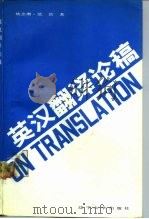
- 英汉翻译论稿
- 1987 沈阳:辽宁大学出版社
-
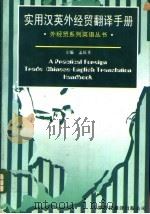
- 实用汉英外经贸翻译手册
- 1997 天津:天津科技翻译出版公司
-
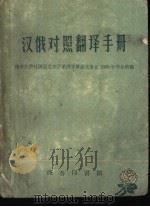
- 汉俄对照翻译手册
- 1959 北京:商务印书馆
-

- 英汉翻译高分指导
- 1996 上海:上海交通大学出版社
-
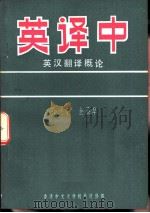
- 英译中·英汉翻译概论
- 1980 香港中文大学校外进修部
-
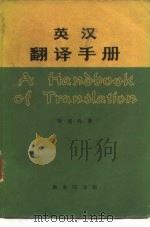
- 英汉翻译手册
- 1980 北京:商务印书馆
-
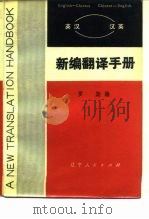
- 英汉汉英 新编翻译手册
- 1980 沈阳:辽宁人民出版社
-
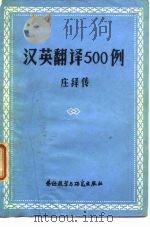
- 汉英翻译500例
- 1980 北京:外语教学与研究出版社
-
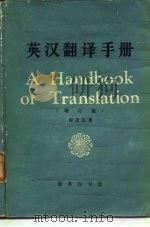
- 英汉翻译手册 增订版
- 1983 北京:商务印书馆
-
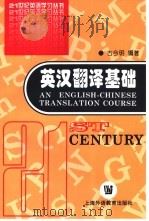
- 英汉翻译基础
- 1997 上海:上海外语教育出版社
-
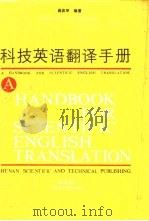
- 科技英语翻译手册
- 1986 郑州:河南科学技术出版社
-

- 英汉翻译手册
- 1997 北京:世界知识出版社
-
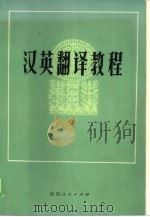
- 汉英翻译教程
- 1983 西安:陕西人民出版社
-
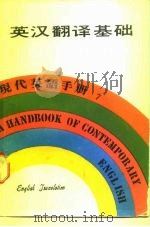
- 现代英语手册7 英汉翻译基础
- 1979 香港万源图书公司
提示:百度云已更名为百度网盘(百度盘),天翼云盘、微盘下载地址……暂未提供。➥ PDF文字可复制化或转WORD
